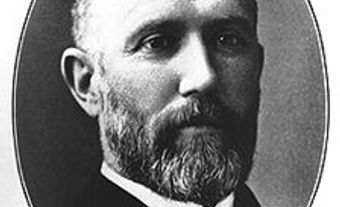Resource Use
Since prehistoric times, the inhabitants of what is now Canada used vegetation and animals for food, clothing and shelter. They fashioned implements and ornaments from MINERALS and, after the arrival of Europeans, used furs for trading. The FISHERIES were the first resource to be systematically exploited by Europeans. As early as the 16th century, BASQUES from France and Spain pursued WHALES in the Gulf of St Lawrence. Early in the 16th century, European fishermen took COD on the GRAND BANKS. Early resource exploitation, like exploration, was peripheral to attempts to find a NORTHWEST PASSAGE to the Orient. During his voyage into the Gulf of St Lawrence in 1534, Jacques CARTIER traded furs with the Micmac. By the late 1500s, French fishermen who sailed annually to the Grand Banks conducted a lucrative trade in furs. The FUR TRADE helped stimulate colonization as short-term monopolies on the St Lawrence fur trade were granted in return for promises to settle colonists there. From the arrival of Samuel de CHAMPLAIN to the days of Jean TALON, the colony in New France depended almost exclusively on the fur trade. The establishment of a trading post at the Indian village of Stadacona (later QUÉBEC CITY) provided a base for the trade, which eventually extended into the continental interior. This settlement, together with Tadoussac, Trois-Rivières and later Montréal, became the object of regular visits from Indians bearing furs.
The first organized attempt at processing resources came with the arrival in 1665 of the Intendant Jean Talon, who established various "manufactories" that used agricultural products to satisfy the settlers' needs and launch revenue-producing export industries. Large numbers of farm animals were introduced to New France. Wool from sheep and hides from cattle provided clothing and shoes. Talon encouraged the growing of hemp, barley and hops and the production of tar. Wood and tar were used for SHIPBUILDING in a yard on the banks of the St-Charles R. Hemp was used to make rigging for sails. With the hops and barley, beer was made in the "King's brewery" located near the shipyard. Surplus agricultural products, fish, wood and beer were exported to the West Indies on locally built ships. Talon also recognized that COPPER, LEAD, iron and COAL were potential sources of wealth for the colony. There was considerable PROSPECTING activity, but these efforts failed to discover minerals that could be exploited with the limited MINING technology of the time.
The impetus for exploitation of most resources was lost after Talon departed. Even the fur trade became more difficult as fur reserves were depleted and the French were forced to travel to Indian villages to trade. The departure of men for the woods (COUREURS DE BOIS) depleted the agricultural labour force and farming declined. Processing of minerals was stopped in 1704 when Louis XIV ordered the colonies not to compete with industries in France. This edict limited colonial economic activity to sending raw materials back to France and was a harbinger of the "further processing" issue, a principal concern in the 20th-century exploitation of Canada's resources. Thus, early in the 18th century, furs again became the principal economic resource of New France. Following the British Conquest (1760), the trade flourished until the middle of the 19th century and declined rapidly thereafter.
The exploitation of Canada's MINERAL RESOURCES began before the arrival of Europeans. The Inuit and Indians used and traded copper implements (see COPPER INUIT; PREHISTORY). In 1604 an exploration party under Champlain found native copper at Cap d'Or, NS. IRON ORE was one of the first minerals mined in Canada. Around 1670, deposits were found in swampy areas near Trois-Rivières. By the 1740s, Canada's first ironworks, the FORGES ST-MAURICE at Trois-Rivières, was turning out top-quality cast-iron stoves, pots, kettles, bullets and cannon for settlers and the military. Samuel HEARNE journeyed N in search of copper. He was to be disappointed, despite being the first white man to reach the Arctic Ocean overland. In 1770 Jesuit fathers experimented with native copper found at Point Mamainse on the N shore of Lk Superior. However, copper mining in Canada began with the discovery that led to the establishment of the Bruce Mine in the Algoma district of Ontario.
Although reports of SILVER deposits dated back to the voyages of Cartier, the first accurate account was that of Pierre, Chevalier de TROYES, a French military commander who recorded finding a silver-bearing vein of ore on the eastern shore of Lk Timiskaming in 1686. The first commercial deposit was discovered in 1868 at SILVER ISLET, a tiny rock island in Lk Superior, about 30 km E of Thunder Bay. The first discovery of GOLD in Canada, in the sands of the Fraser R (1857), led to the CARIBOO GOLD RUSH (1862). Further discoveries were made in Nova Scotia and Ontario. The KLONDIKE GOLD RUSH began in 1897. Gold rushes had a profound effect on the development of BC, and on the opening of the Yukon and North-West Territories to settlement.
Much of the exploration of western Canada was the result of the quest for beaver pelts. The railway later opened the mineral riches of the West to exploitation. Railways also brought pioneer farmers who began to reap the rich agricultural potential (see AGRICULTURE HISTORY). The explorers had opened up the vast reaches of the West and North and later scientists and surveyors (particularly from the GEOLOGICAL SURVEY OF CANADA) would gather useful details of terrain and resources. The old fur-trading posts of the Hudson's Bay Co and North West Co were quickly transformed into settlements.

 Share on Facebook
Share on Facebook Share on X
Share on X Share by Email
Share by Email Share on Google Classroom
Share on Google Classroom

